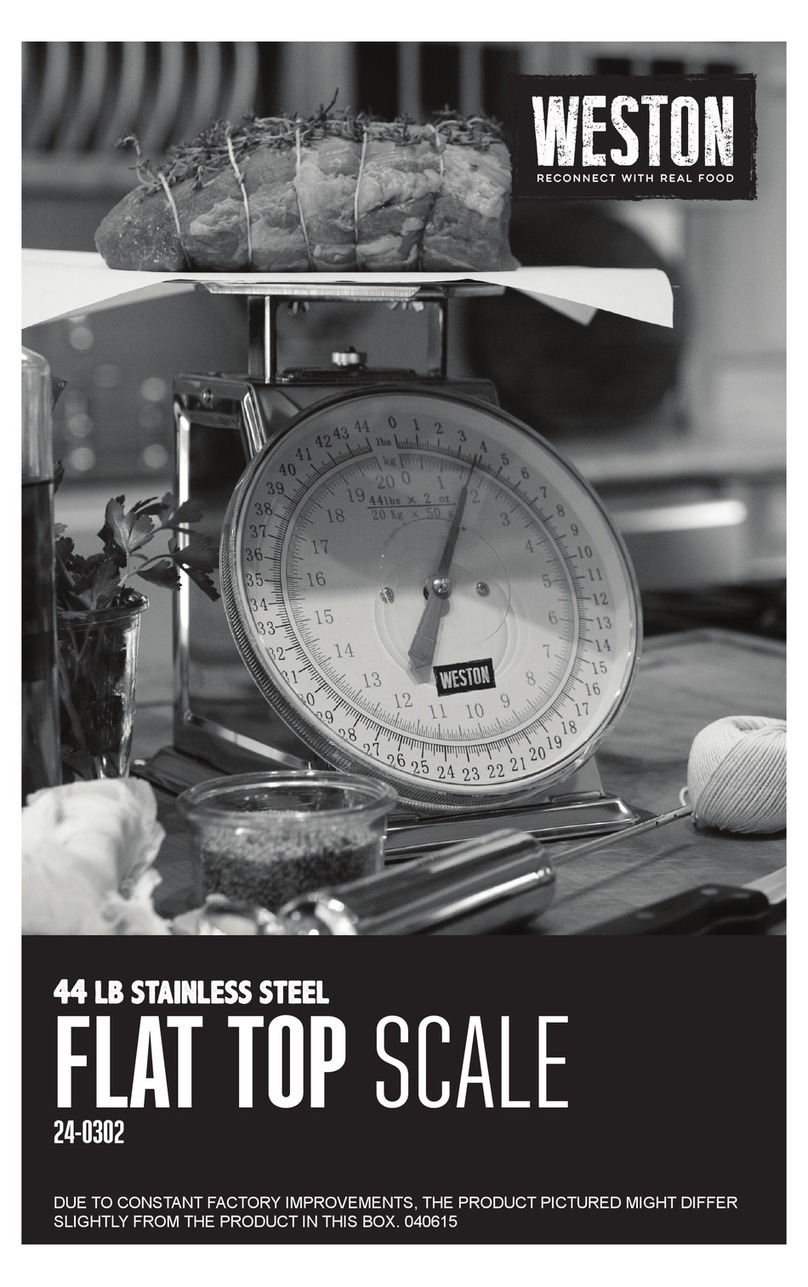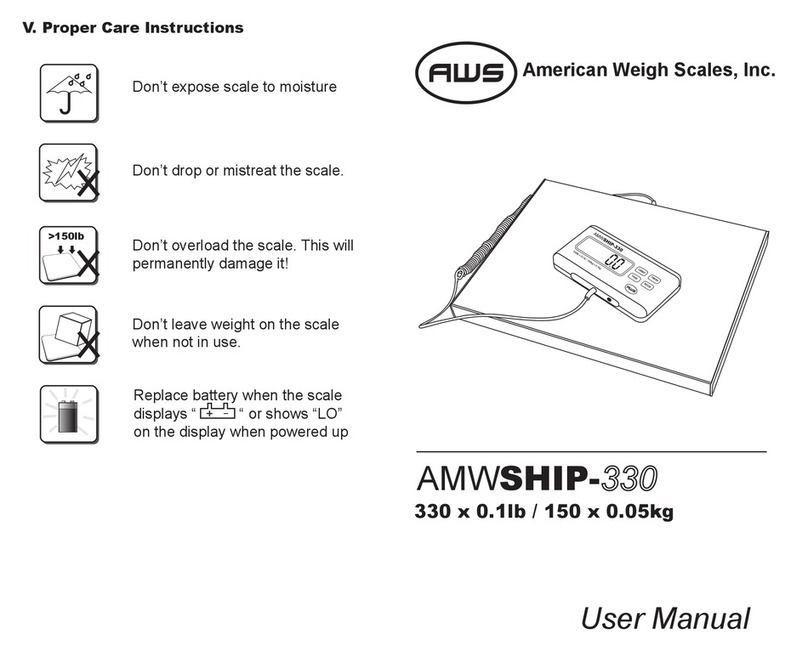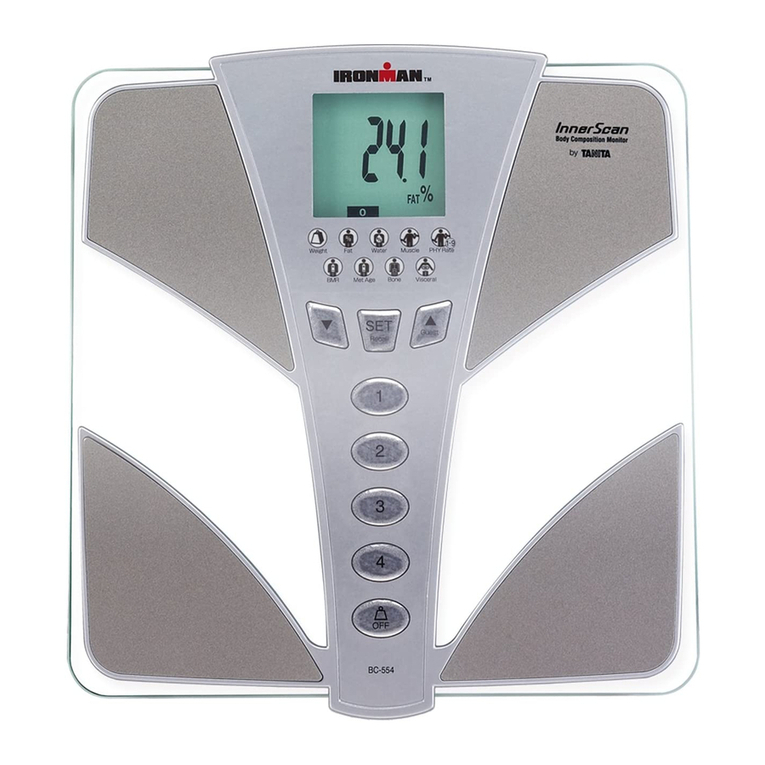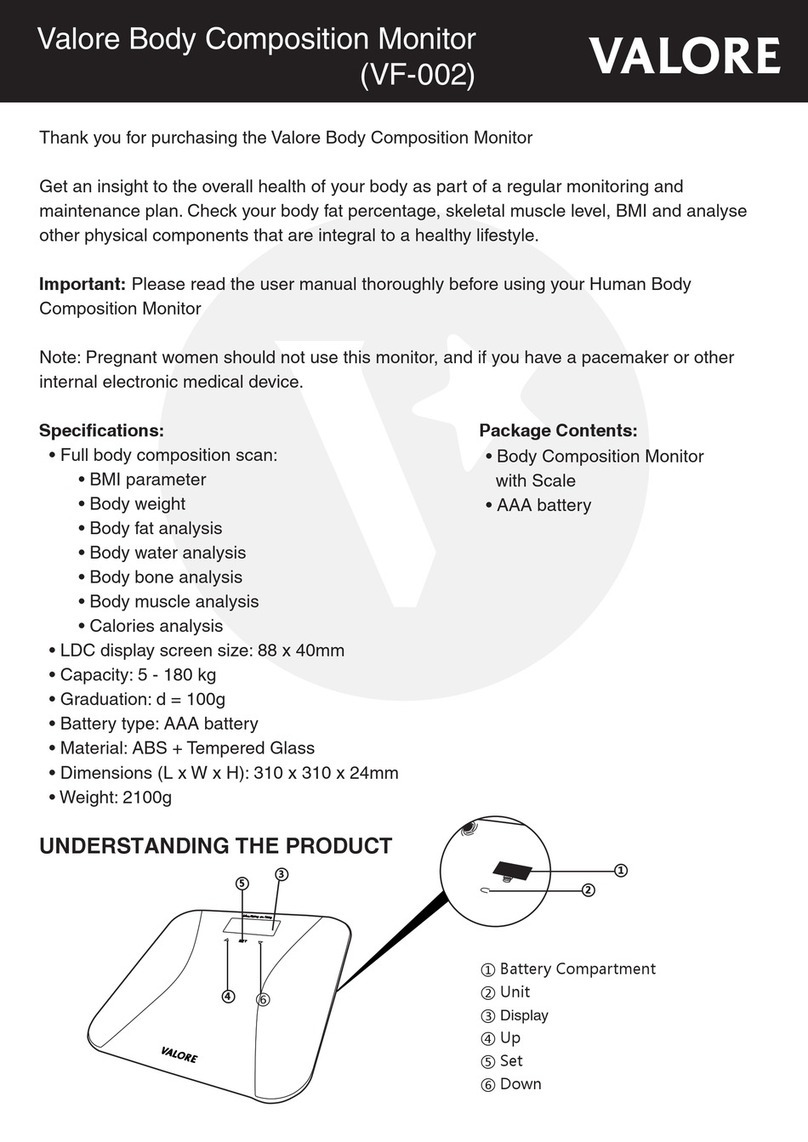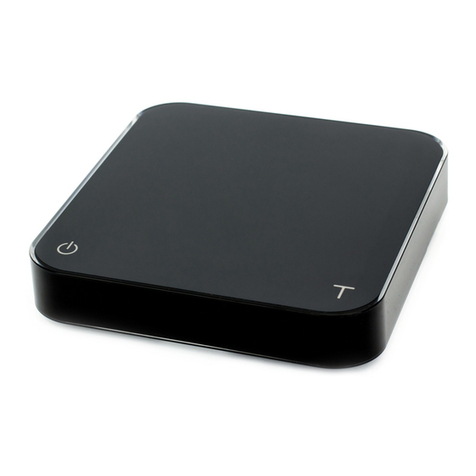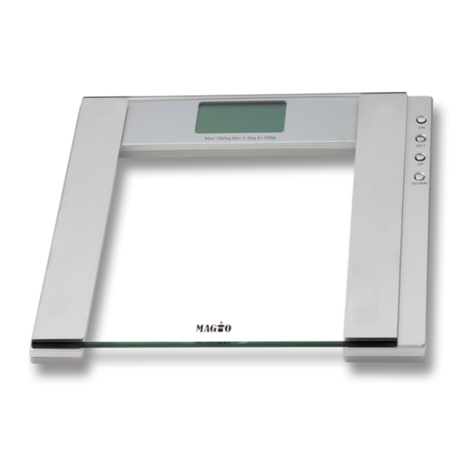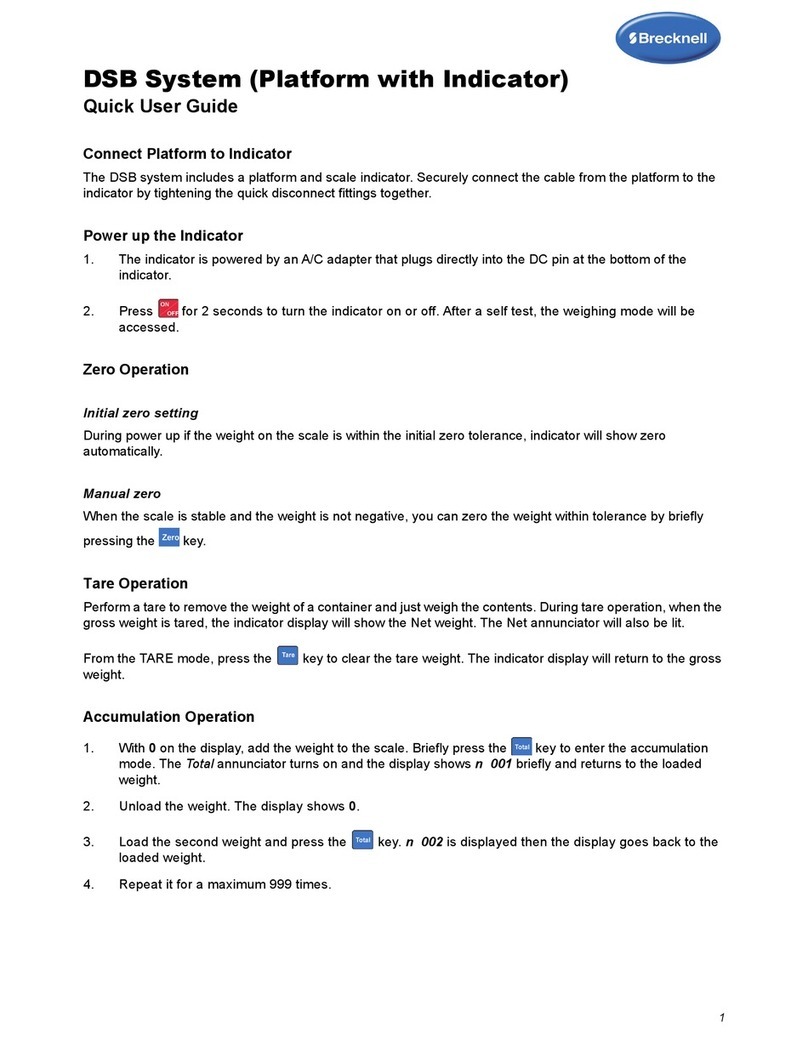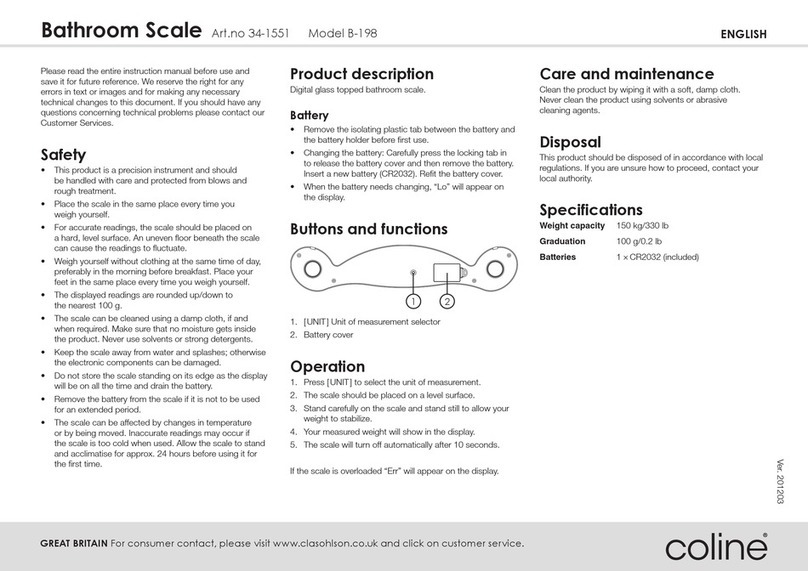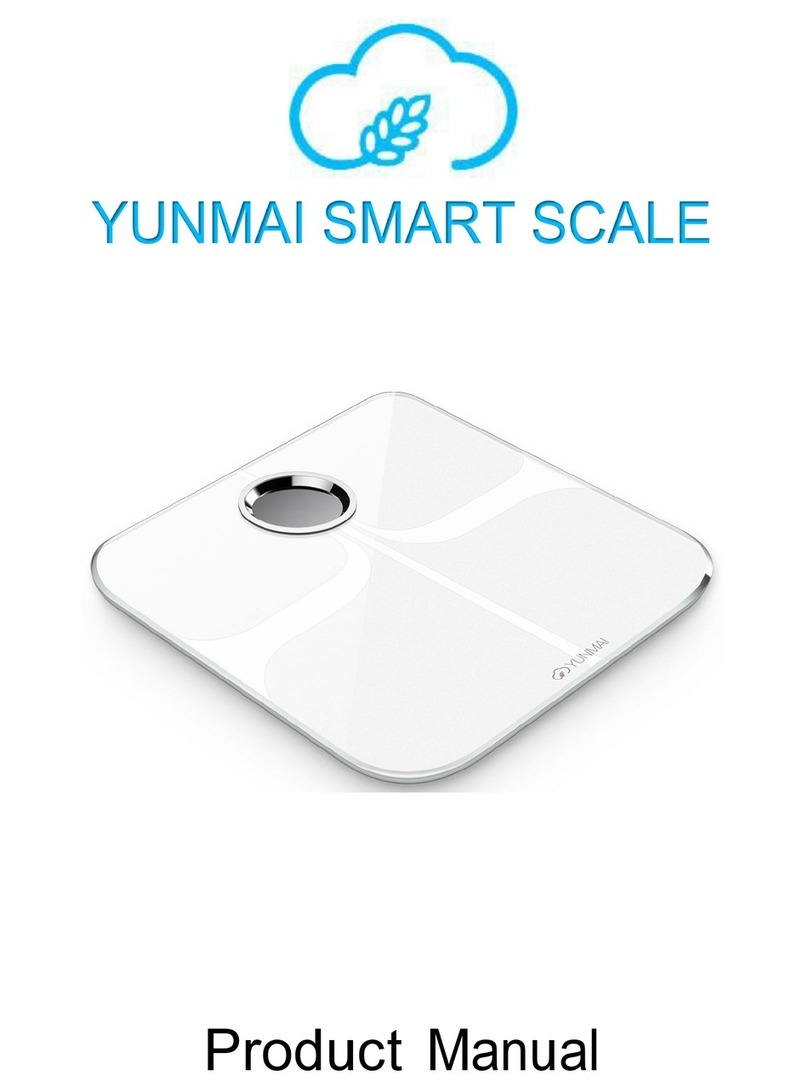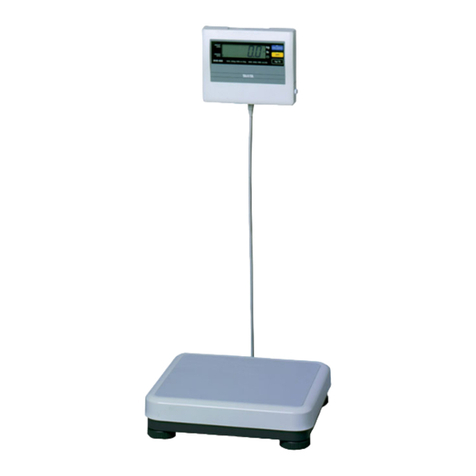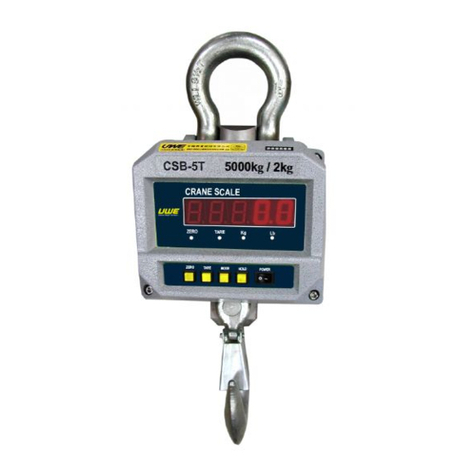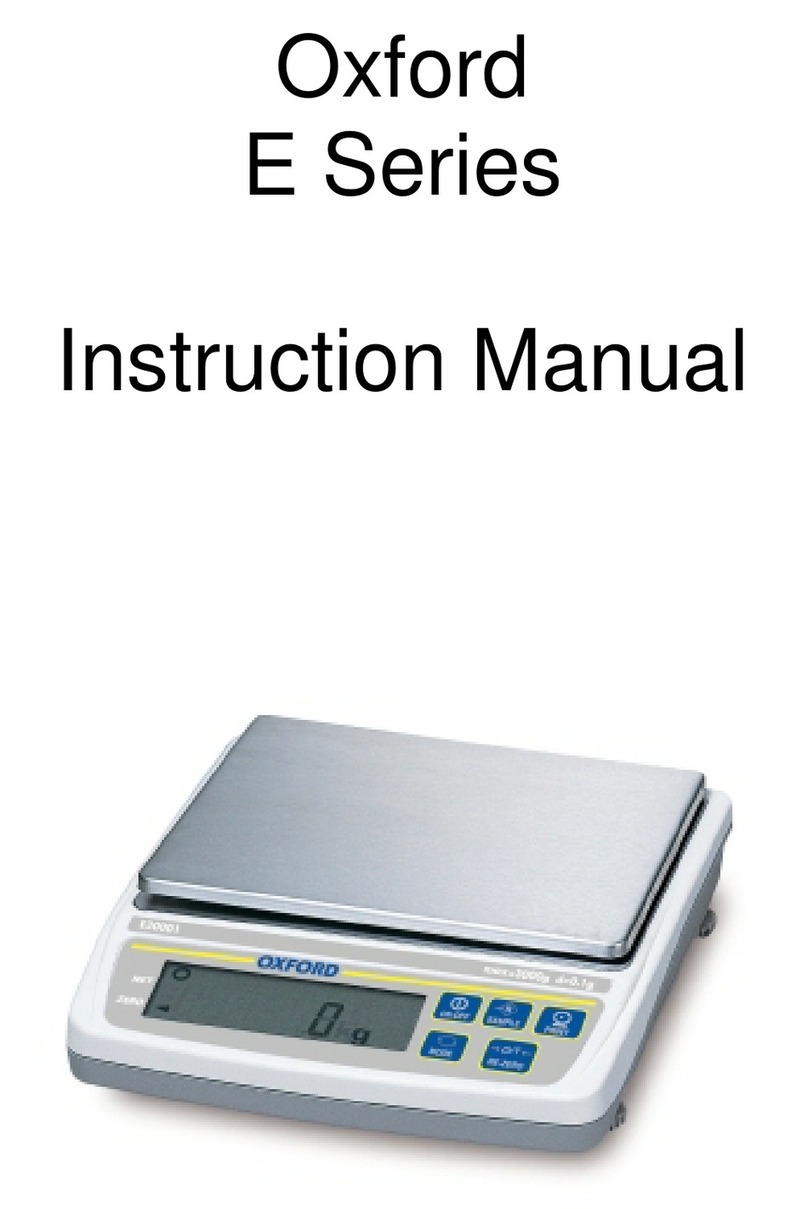Shinko Denshi AZ Series User manual

HIJK
Intrinsically Safe Explosion-proof Electronic Balance
AZ Series
Operation Manual
●To ensure safe and proper use of the balance, please
read this manual carefully.
●After reading this manual, store it in a safe place near
the balance, so you can review it as needed.
SHINKO DENSHI CO., LTD.
WARNING

Introduction
This product is an explosion-proof electronic balance conforming to the Constructional Requirements for
Electrical Equipment for Explosive Atmospheres by the Ministry of Health, Labour and Welfare of Japan.
It has been confirmed that the balance does not generate electric sparks or explode due to a rise in the
temperature of its parts whether in a normal or abnormal (failure) state when used in an explosive gas
atmosphere.
This document explains the operation and notes on the use of the AZ Series intrinsically safe explosion-proof
electronic balance.
Carefully read this document before using the balance in order to use it efficiently. After reading this document,
please keep it at hand for future reference.
Temperature class
T4: Maximum surface temperature of 135°C
Explosion class of gas or steam
IIB: Applicable to Category B for plants and business
facilities
Type of explosion-proof construction
ia: Intrinsically safe explosion-proof (can be used in hazardous area
zones 0, 1, and 2)
Indicates an explosion-proof construction based on the technological standards
that are harmonized with international standards
[Certified explosion-proof class]
Ex ia IIB T4

lThe copyrights of this document belong to Shinko Denshi Co., Ltd., and no part of
this document may be copied or reproduced in any form, without the prior consent of
Shinko Denshi Co., Ltd.
lPlease note that due to product improvements or other reasons, there may be some
discrepancies between the content of this document and the product.
lThe content of this document may be changed without notice in the future.
lAlthough we put forth our best efforts to ensure that this document is prepared
properly, if you notice any errors or omissions, please contact us.
lDocuments with missing pages or binding errors will be replaced free of charge.
Please contact the Sales Office at which you purchased the unit or our Technical
Service Division.
lWe will provide support services in accordance with individual maintenance
contracts for any failure of the main unit or system. However, we are not responsible
for any losses or damages including the suspension of your work resulting from a
failure of the main unit or system.
lis a registered trademark of Shinko Denshi Co., Ltd. Other company
names and product names listed in this document are the trademarks or registered
trademarks of their respective owners.
Instructions


-i-
Important Notice
•Please be aware that the balance is potentially hazardous. When
installing, operating, maintaining, or inspecting the balance, be sure to do
so in accordance with this document.
•Shinko Denshi Co., Ltd. is not responsible for any losses or damages
including injury resulting from any nonconformance to this document,
misuse, or modifications without approval from Shinko Denshi Co., Ltd.
lThe current industrial equipment industry is faced with an increasing number of potential
risks due to the use of new materials or processes, and increase in the speed of
machines used. It is not possible to predict the circumstances surrounding all of these
risks. In addition, because there are a number of things that cannot or should not be
performed with the balance, it is not possible to list them all in this operation manual. For
this reason, assume any action not explicitly described as possible is not possible. When
installing, operating, or maintaining/inspecting the balance, please take sufficient safety
measures in addition to observing the instructions in this document and notes displayed
on the balance.
lThe copyrights of this document are owned and reserved by Shinko Denshi Co., Ltd.
Please note that copying or disclosing the company’s drawings or technical materials is
not permitted without prior written approval from the company.
lIf you have a question on this document or need further information, please contact the
Sales Office at which you purchased your unit and inform them of the model number and
manufacturer's serial number.
Laws and Regulations Pertaining to
Balances
NOTE
•Please note that you cannot use the balance you have purchased for
trading and certification.
WARNING

-ii -
How to Use This Manual
■Symbols used in this manual
Understand what the following symbols indicate and follow the instructions in this document.
Symbol Meaning
WARNING is used to indicate a potentially hazardous situation which, if not
avoided, could result in death or serious injury.
CAUTION is used to indicate a situation which, if not avoided, will cause
damage to equipment or devices, or corruption, erasure or overwriting of
data.
NOTE
NOTE is used to call particular attention to or emphasize information.
Reference
Reference is used for useful information for the operation of the balance.
Indicates a “prohibited” action.
Indicates a “mandatory” action that must be executed without fail.
WARNING
CAUTION

-iii -
■How to read this manual
This manual comprises the following chapters:
Chapter 1 How to Begin This chapter gives introductory information such as how to
assemble and install the balance, and how to turn the power on
and off. For your first use of the balance, be sure to read this
chapter.
Chapter 2 Basic Operation This chapter gives basic instructions for how to weigh objects.
The procedures for setting the function capabilities used to set
various functions are also described.
Chapter 3 Various Measuring
Methods This chapter describes how to use various measuring methods
available for the balance, such as parts counting and
percentage weighing.
Chapter 4 Adjusting the
Balance The balance needs adjustment depending on where and when it
is used. This chapter describes how to calibrate the balance.
Chapter 5 Function Setting This chapter describes how to set various functions of the
balance, such as setting units and minimum readability.
Chapter 6Troubleshooting This chapter describes how to troubleshoot problems occurring
with the balance, including actions required for errors, and
trouble remedies.
Appendixes Required data including the specifications of the balance is
described.
Index of Terms Relevant pages can be searched for through indexed terms.
■Notational conventions
In this manual, the following notation is used.
The balance Refers to an AZ series product.
Measure Refers to measuring a sample by placing it on the pan.
Other expressions such as “weigh” and “measure weight” may also
be used.
[Function] key The names of the operation keys provided on the front of the main
unit are expressed in brackets [ ].
“Func” The messages shown on the display are expressed in quotation
marks “ ”.
Press the key. Refers to giving a light press of the key.
Press and hold the key. Refers to holding down the operation key and releasing the key after
an intended display is obtained.

-iv -
Important Notice .........................................................................................................................................i
How to Use This Manual ...........................................................................................................................ii
1How to Begin........................................................................................................................................7
1-1Instructions for Proper Use...............................................................................................7
1-2Instructions for Proper Installation....................................................................................9
1-3Checking Supplied Items................................................................................................10
1-4Names and Functions of Component Parts...................................................................12
1-5Workings of Operation Keys...........................................................................................13
1-6How to Read Displayed Signs........................................................................................14
1-7Installation Requirements and Instructions ....................................................................16
1-7-1Installation requirements (Explosion-proof specification) ...................................16
1-7-2Instructions for proper installation.......................................................................16
1-8Assembling and Installing the Balance ..........................................................................17
1-8-1Attaching the pole (AZ-B6000 to AZ-B150K)......................................................17
1-8-2Attaching the pole (AZ-B450K)...........................................................................18
1-8-3Attaching the display...........................................................................................19
1-9Replacing the Batteries ..................................................................................................22
1-10 Leveling the Balance......................................................................................................24
2Basic Operation.................................................................................................................................25
2-1Powering On/Off the Balance and Checking Operation.................................................25
2-2Adjusting the Zero-point .................................................................................................26
2-3Weighing by Placing a Sample in a Container (Tare)....................................................27
2-4Weighing an Added Sample...........................................................................................29
2-5Displaying the Sum of the Sample and the Container...................................................30
2-6Basic Operation of Functions .........................................................................................32
3Various Measuring Methods..............................................................................................................35
3-1Weighing (Weighing Machine) .......................................................................................35
3-2Counting Parts Count.....................................................................................................36
3-3Measuring Percentage ...................................................................................................39
3-4Obtaining Weight Multiplied by Coefficient.....................................................................43
3-5Adding Multiple Measurements......................................................................................45
3-5-1Addition function setting......................................................................................45
3-5-2Weighing with addition function (addition of loaded sample weights)................47
3-5-3Weighing with addition function (addition of unloaded sample weights)............48
3-6Judging “Above” and “Below” (Limit Function)...............................................................50
3-6-1Judging by absolute values.................................................................................51
3-6-2Judging by deviation values................................................................................54
3-6-3Displaying 2-point bar graph...............................................................................57
4Adjusting the Balance........................................................................................................................59
4-1How to Adjust .................................................................................................................59
5Function Setting.................................................................................................................................61
Contents

-v -
5-1Using Two Expression Units by Switching Them ..........................................................61
5-2Minimum Readability Setting .........................................................................................62
5-3Saving Container (Tare) Weight ....................................................................................63
5-4Using Preset Tare Range ..............................................................................................64
5-5Auto Backlight Off Setting..............................................................................................66
5-6ID No. Setting.................................................................................................................67
5-7Improving the Stability of the Balance ...........................................................................69
5-8Key Control ....................................................................................................................70
6Troubleshooting.................................................................................................................................73
6-1Error Messages..............................................................................................................73
6-2Troubleshooting .............................................................................................................75
6-3Initializing .......................................................................................................................77
6-4Maintenance...................................................................................................................78
Appendixes..............................................................................................................................................79
Appendix 1 Function Setting List...........................................................................................79
Appendix 2 Measurement Mode List.....................................................................................85
Appendix 3 Specifications......................................................................................................86
Appendix 4 Usable Gases .....................................................................................................90
Index of Terms.........................................................................................................................................91

-vi -
(Notes)

AZ Series Operation Manual 1How to Begin
-7 -
1How to Begin
1-1Instructions for Proper Use
WARNING
nDo not disassemble or modify the unit
Unless otherwise noted in this document, do not disassemble, modify, install unspecified parts, or
remove any parts of the unit. Doing so could cause serious accidents leading to injury.
nDo not use the unit in unusual conditions
If smoke or any unusual smell is detected, please contact our Sales Office or Technical Service Division
for repair of the unit. Continuing to use the unit could result in fire or an electrical shock. In addition,
never repair the unit by yourself as it is dangerous.
nDo not touch the electrodes with wet hands
Electrical shock or short circuit could be caused.
nNever use thinner and the like to clean the unit
The unit may be discolored. Wipe with a dry, soft cloth, or use a neutral detergent.
nDo not apply a physical shock to the balance
Doing so could cause damage to the unit and deteriorate its measuring performance.
nDo not submerge the balance in water
This balance cannot resist high hydrostatic pressure due to submersion in water, etc.
nDo not leave the balance with samples on the pan
Doing so could cause the balance to malfunction or deteriorate its measuring performance.
nAlways use the balance in a horizontal position
An inclination of the balance may cause errors, resulting in inaccurate measurements.
Install the balance on a solid place (Refer to “Section 1-8: Assembling and Installing the Balance”
(P. 11)).
CAUTION

1How to Begin AZ Series Operation Manual
-8 -
(Warnings regarding batteries)
nReplace batteries at “nonhazardous places”
Replacing batteries at hazardous places could cause accidents, such as explosion or fire.
nNever disassemble or modify the batteries. Make sure you insert
batteries with the positive and negative poles correctly inserted,
and be careful of short circuits
Such mishandling could damage the batteries, or cause the balance to fail.
(Cautions regarding batteries)
nDo not mix old and new batteries, or batteries of different types
or manufacturers
Such mishandling could damage the batteries, or cause the balance to fail.
nDo not use batteries that leak
nDispose of batteries in accordance with local regulations
nDo not put the batteries into a fire
They may explode.
nIf the balance is not going to be used for a long time, store it with
the batteries removed
nObserve the precautions printed on the batteries used
DANGER
CAUTION

AZ Series Operation Manual 1How to Begin
-9 -
1-2Instructions for Proper Installation
Avoid installing the balance in the following places. Installing the balance in such places may result in
inaccurate measurements.
•Places where the temperature is low or high, or the humidity is high
•Places where the balance will be subjected to direct sunlight
•Places where there is much vibration(including places where the floor or base is unstable)
•Places where the balance will be directly exposed to wind, cool air, or heated air (places where the
balance will be directly exposed to cool air from air conditioners or refrigerators, heated air from air
conditioners or heaters, or wind from fans, etc.)
•Places where there is excessive dust
•Places where there are high levels of noise
•When carrying the balance, hold the lower parts of the pole base and weighing section to lift the
balance. Holding other parts such as the pole to carry the balance may damage the balance.
•After installing the balance, leave it for a while at room temperature before using it.

1How to Begin AZ Series Operation Manual
-10 -
1-3Checking Supplied Items
The following items are contained in the box. In the unlikely event of problems such as missing or broken
items, please contact the retailer from whom the balance was purchased.
lAZ-B6000 to AZ-B150K
■表示部
■計量皿 ■ポール
■角度調整部
■計量部
単一乾電池
(4個)
※付属の乾電池は
動作確認用です。
表示部固定ネジ
(1個) ポール固定ネジ
(4個) 六角レンチ
(2.5mm/3mm)
nDisplay
nWeighing
section
nPan
nPole
nAngle adjuster
D batteries
(4)
*Batteries that come
with the balance are
for checking operation.
Display fixing screw
(1) Pole fixing screws
(4)Hexagonal wrench
(2.5 mm/3 mm)

AZ Series Operation Manual 1How to Begin
-11 -
lAZ-B450K
nDisplay nWeighing section
nPan
nPole
D batteries
(4)
*Batteries that come
with the balance are
for checking operation.
Hexagonal wrench
(3 mm)
Display fixing screw
(1)
Pole fixing screws
(M4 ×10, double sems, 4)

1How to Begin AZ Series Operation Manual
-12 -
1-4Names and Functions of Component
Parts
Battery holder cover
Balance cable
Cabinet ground
terminal (M4)
Angle adjuster
Display
Cabinet ground
*For the type with the weighing capacity of 30–
150 kg (M5 terminal)
*For the type with the weighing capacity of 450 kg
(M6)
Pole
Pan
Adjuster
Cabinet ground terminal (M4)
*For the type with the weighing capacity of
6000 g
Level
Pole base
Inclination prevention foot

AZ Series Operation Manual 1How to Begin
-13 -
1-5Workings of Operation Keys
The operation keys are provided on the front of the main unit. Use these keys to operate and set the balance.
1
2
3
4
5
6
7
8
Types and names of keys Function
1[On/Off] key Use to power on/off the balance.
2Direction key Use to set the function setting, etc.
3[Print] key Use for printing or other purposes.
4[Function] key Use to switch measurement modes and to call a function.
5[Tare] key Use to set the tare range.
6[Cal] key Use to start calibration.
7[Set] key Use to start settings.
8[Zero] key Use to adjust the zero-point.
Reference
In some operation keys, executed functions depend on how they are pressed.
In this manual, how keys are pressed is expressed as follows:
•Quick press: Lightly press and then quickly release the key. “Press a key”
refers to quick press.
•Press and hold: Hold the key down and release it after the appropriate display
is obtained.

1How to Begin AZ Series Operation Manual
-14 -
1-6How to Read Displayed Signs
Each of the signs displayed on the front of the main unit has the following meanings:
Displayed sign Description
The stable state indicator (lights up when the balance is stable).
Minus.
Indicates that settings are being saved, the zero-point is being adjusted, and the
balance is waiting for stabilization upon tare range setting.
Zero-point.
Indicates that a tare range is being set and indicates net weight.
Indicates total weight (gross weight).
Indicates preset tare.
CAL Indicates that calibration is being executed.
Indicates that the limit function is being used.
Bar graph.
Indicates that measurement data and a GLP compliance form is being output.
Parts counting mode.
Percentage weighing mode.
Unit covering mode.

AZ Series Operation Manual 1How to Begin
-15 -
Indicates sum totals.
Indicates that the addition function is enabled when the balance is in addition mode.
Indicates that the balance is standing by.
Indicates that an ID number is being displayed or entered.
Indicates that weight is being displayed in the gravimeter mode.
Indicates that actual water temperature (unit: °C) is being entered in the gravimeter
mode.
Indicates that midair weight has been saved in the gravimeter mode.
Indicates that the balance is displaying in gravimeter mode (no units).
Indicates that the density of a medium (unit: g/cm3) is being entered.
Grams
Kilograms
Displayed when the balance is powered by batteries. As remaining battery time
declines, the display changes →→(blinking). When
(blinking) is displayed, replace the batteries soon.
(Upper)
(Lower)
(Upper)
(Lower)

1How to Begin AZ Series Operation Manual
-16 -
1-7Installation Requirements and
Instructions
1-7-1Installation requirements (Explosion-proof specification)
電池ホルダ
LR20またはR20PU
を4本直列接続
ATZ−DSP基板
1
2
3
4
5
6
重量表示器
通信回路
重量測定器
メタルコネクタ
危
険
場
所
4芯シールド線
ATZ−AD基板 ロードセル
筐体用接地
筐体用接地
IRIO基板
電源
lThe inductance of the special cable (balance cable): 1 mH or less
lThe capacitance of the special cable (balance cable): 1 µF or less
lUse one of the following batteries as these can be installed in the battery case:
D alkaline battery (LR20): four series-connected
D manganese battery (R20PU): four series-connected
lReplacing batteries in hazardous areas is prohibited.
1-7-2Instructions for proper installation
1. Be sure to replace batteries in non-hazardous areas.
D alkaline batteries or D manganese batteries (black) can be used.
2. Separate the balance cable from the motor power line and other wiring cables.
Otherwise, electrostatic induction and electromagnetic induction may damage the intrinsically safe
explosion-proof performance. Wire the balance cable with sufficient distance from other cables.
Hazardous area
Communication circuit
IRIO board
Weight display
ATZ-DSP board ATZ-AD board
Weight measurement equipment
Power source
Battery holder
Four series-connected
LR20 or R20PU
Enclosure ground
Enclosure ground
Metal connector
4-wire shield cable
Load cell
This manual suits for next models
4
Table of contents
Other Shinko Denshi Scale manuals

Shinko Denshi
Shinko Denshi LF124R User manual
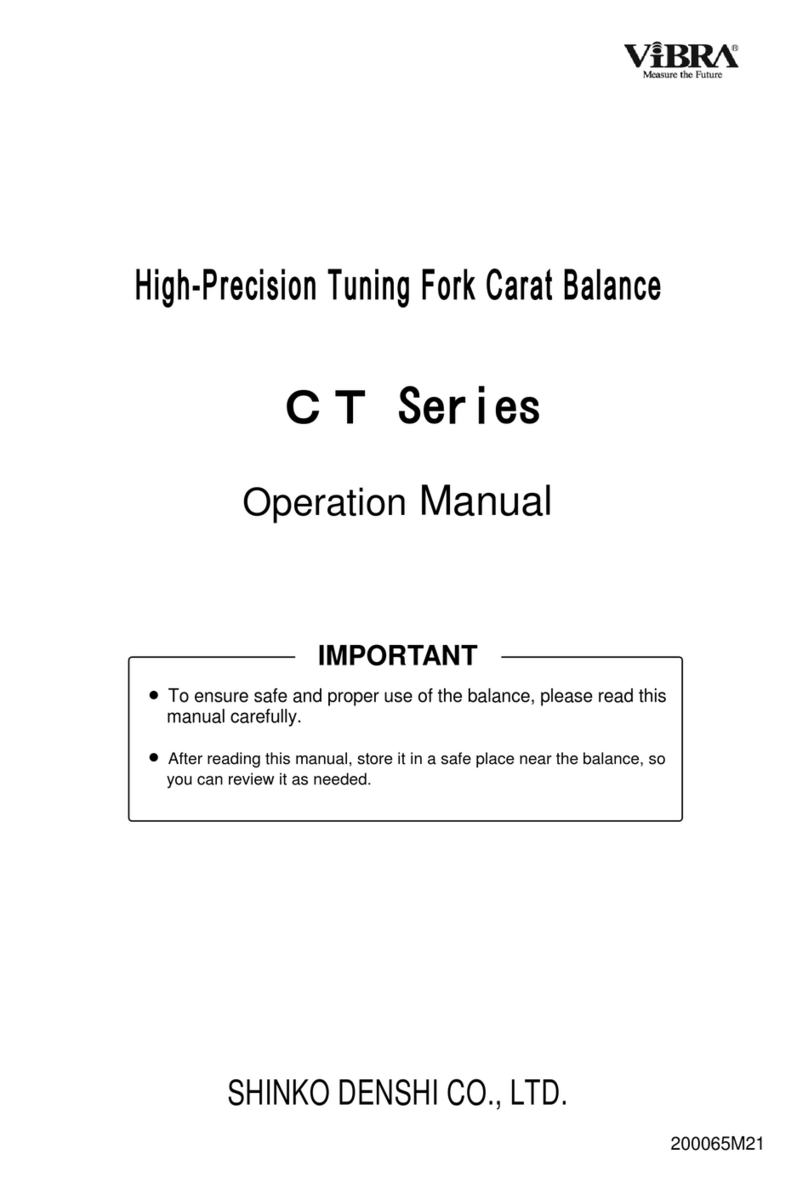
Shinko Denshi
Shinko Denshi CT603 User manual

Shinko Denshi
Shinko Denshi FZ623Ex User manual

Shinko Denshi
Shinko Denshi LN 223CE User manual

Shinko Denshi
Shinko Denshi HTR-80CE User manual

Shinko Denshi
Shinko Denshi PF-R150 User manual

Shinko Denshi
Shinko Denshi LN 423 User manual
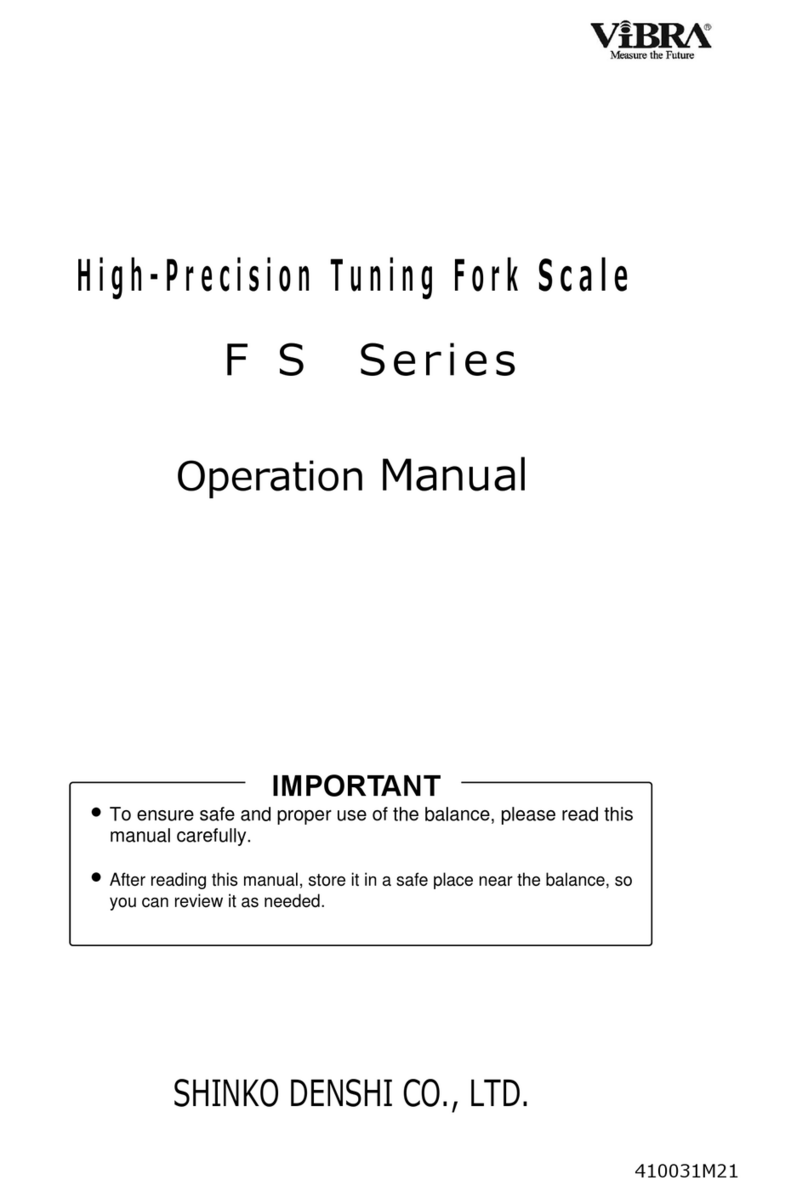
Shinko Denshi
Shinko Denshi FS623 User manual
